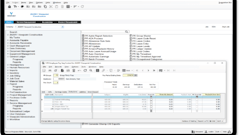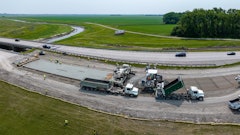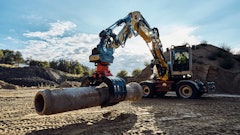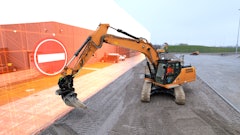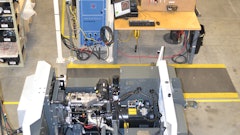
Any disruption to services on a jobsite can be disastrous and lead to things like safety hazards, delays, and even financial losses. Modern technical solutions are integral to supporting the operation, monitoring, and control of any construction project. And, while technology can be our best friend, construction companies are adopting new technologies at a breakneck pace — adding things like IoT devices, Bluetooth devices on site, and advanced systems to coordinate with all contractors and partners to the network means more and more assets must be looked after. Technology still needs to be managed and monitored for obvious reasons such as their usage, condition, and location.
And then, of course, let’s not forget about the various regulations that these companies must comply with such as OSHA, EPA, FLSA, and Federal Acquisition Regulation (FAR). Beyond federal law, regulations get specific by state. All of this can be difficult to manage when multiple companies/partners are involved, so technology solutions are needed to ensure compliance.
Remote IT Environments Create Unique Challenges
With mission-critical IT assets in edge environments are essential for maintaining the reliability and functionality of the construction industry. They also facilitate the transmission of data, communication, and monitoring capabilities. These assets can be costly and usually contain sensitive or mission-critical data so preventing theft, loss, or downtime is necessary to ensure compliance, continued operations, as well as financial solvency.
But managing these assets from afar can be tricky as most companies don’t have any onsite or full-time staff to address issues as they arise. This is where some type of ‘anytime-anywhere’ proactive tracking system can be invaluable — from locating equipment to pulling maintenance records, an automated system of this kind should also relay real-time environmental data so equipment doesn’t overheat or get damaged by high humidity levels, for instance.
Automating Asset Management is a Game Changer
Below are six different ways that IT asset management can help — or hurt — construction companies as they try to scale, stay compliant, and cut costs. When done right, properly managing assets at the edge allows them and other utility providers to:
- Have visibility and control: Through effective IT asset management, construction companies have visibility into assets, enabling them to track their location, configuration, and usage. This ensures all assets are accounted for and reduces the risk of loss, theft, or unauthorized access.
- Comply with regulations: Construction companies must comply with various regulations related to things like labor, data privacy and operational practices. By maintaining accurate records, managing software licenses, and implementing appropriate security measures, effective asset management actually helps them show compliance.
- Mitigate risk and safeguard infrastructure: Effective IT asset management minimizes risks by identifying potential vulnerabilities, ensuring timely software updates and patches, and proactively addressing security threats. It also helps prevent downtime, maintain system integrity, and safeguard critical infrastructure.
- Cut costs through improved efficiencies: By gaining insights into asset utilization and lifecycle management, companies can make better informed decisions regarding procurement, maintenance, upgrades, and sunsetting. This leads to cost savings, improved efficiency, and better budgetary planning.
- Automate operations and avoid downtime: By having a centralized repository of asset information, companies can automate tasks such as inventory management, maintenance scheduling, and software license tracking. This greatly reduces manual effort, eliminates errors, and improves overall productivity.
- Scale expanding infrastructure: IT asset management ensures that assets are properly integrated, compatible with existing systems, and aligned with the company's strategic objectives. It provides a foundation for scalability, allowing companies to efficiently manage their expanding IT infrastructure and focus on long-term growth.
A New Meaning to ‘Keeping the Lights On’
Effective IT asset management plays a critical role in the success of construction companies, especially as more assets are deployed in unmanned, remote sites. These edge locations run 'lights out'—or unsupervised—creating challenges around controlling IT equipment, managing physical access, and being able to quickly tackle issues when they arise.
But, by adopting proactive tracking systems and automating asset management processes, construction companies can not only cut costs, they also benefit by gaining visibility and control, staying compliant with regulations, mitigating risk, avoiding downtime, and scaling their IT infrastructure effectively. In today’s over-the-top, hyper-connected, digitally-driven world, it’s things like that that will help you stay ahead of the competition, focus on innovation, grow your business, and keep those lights on—not just for the company, but also for your customers.











